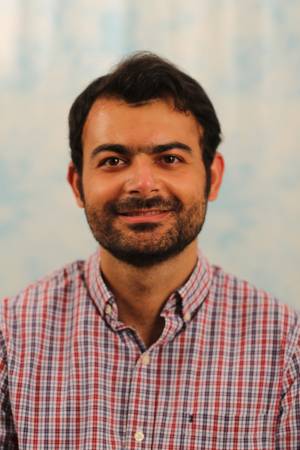Student Talks
Time-of-Flight Radiance Fields for Dynamic Scene View Synthesis
Abstract: Neural networks can represent and accurately reconstruct radiance fields for static 3D scenes (e.g., NeRF). Several works extend these to dynamic scenes captured with monocular video, with promising performance. However, the monocular setting is known to be an under-constrained problem, and so methods rely on data-driven priors for reconstructing dynamic content. We replace these [...]
Combining vision-based tactile, proximity, and global sensing for robotic manipulation
Abstract: I will begin by describing our work on visual servoing a manipulator and localizing objects using a robot-mounted suite of vision and vision-based tactile sensors, our results, algorithms used, and lessons learned. We show that by collocating tactile, and global (e.g. an RGB(D) camera) sensors, our setup can perform better than using each type [...]
Carnegie Mellon University
Visual Representation and Recognition without Human Supervision
Abstract: The advent of deep learning based artificial perception models has revolutionized the field of computer vision. These methods take advantage of the ever growing computational capacity of machines and the abundance of human-annotated data to build supervised learners for a wide-range of visual tasks. However, the reliance on human-annotated is also a bottleneck for [...]
Design, Modeling and Control for a Tilt-rotor VTOL UAV in the Presence of Actuator Failure
Abstract: Providing both the vertical take-off and landing capabilities and the ability to fly long distances to aircraft opens the door to a wide range of new real-world aircraft applications while improving many existing applications. Tiltrotor vertical take-off and landing (VTOL) unmanned aerial vehicles (UAVs) are a better choice than fixed-wing and multirotor aircraft for [...]
Large Scale Dense 3D Reconstruction via Sparse Representations
Abstract: Scene reconstruction systems take in (3D) videos as input, and output 3D models with associated poses for inputs. With the demand of 3D content generation, the technique has been drastically evolving in recent years. For professionals equipped with depth sensors, efficient dense reconstruction systems have become available to efficiently recover scene geometry. For ordinary [...]
Carnegie Mellon University
Learning Multi-Modal Navigation in Unstructured Environments
Abstract: A robot that operates efficiently in a team with humans in an unstructured outdoor environment must translate commands into actions from a modality intuitive to its operator. The robot must be able to perceive the world as humans do so that the actions taken by the robot reflect the nuances of natural language and [...]
Lessons Learned from Creating Low-Cost Dexterous Soft Robot Hands
Abstract: Soft robot hands have shown promising results when it comes to dexterous grasping and manipulation. Compared to their rigid counterparts, soft hands can be manufactured for a fraction of the cost and offer robustness to uncertainty due to their inherent compliance. Unfortunately, the design and fabrication of soft robot hands is still a time-consuming [...]
Modern Trajectory Forecasting Methods Lack Social Awareness
Abstract: We present a thorough evaluation and analysis of state-of-the-art (SOTA) human trajectory forecasting methods with respect to metrics for safe and socially-aware prediction, e.g., collision rate, in addition to traditional displacement metrics, e.g., average displacement error. First, we introduce a system for trajectory classification which is used to evaluate the strengths and weaknesses of [...]
Carnegie Mellon University
Vision-based Aircraft Detection and Tracking for Detect-and-Avoid
Abstract: Detect-and-Avoid (DAA) capabilities are critical for autonomous operations of small unmanned aircraft systems (sUAS). Traditionally DAA systems for large aircraft have been ground and radar-based. Due to the size, weight, and power (SWaP) constraints of sUAS, current DAA systems rely mainly on vision-based sensors and ADS-B (Automatic Dependent Surveillance-Broadcast) transponders. However, not all flying [...]
Teaching Agent Reward Functions via Demonstrations for Human Inverse Reinforcement Learning
Abstract: For intelligent agents (e.g. robots) to be seamlessly integrated into human society, humans must be able to understand their decision making. For example, the decision making of autonomous cars must be clear to the engineers certifying their safety, passengers riding them, and nearby drivers negotiating the road simultaneously. As an agent's decision making can [...]






